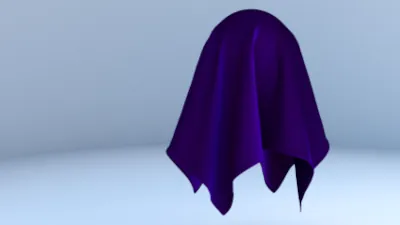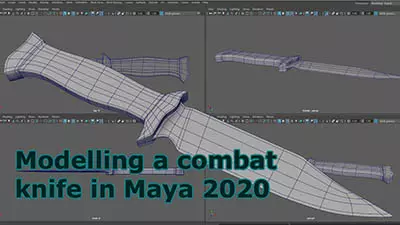Introduction to Maya - Modeling Fundamentals Vol 2
This course will look in the fundamentals of modeling in Maya with an emphasis on creating good topology. It's aimed at people that have some modeling experience in Maya but are having trouble with
complex objects.
#
1
13-10-2016
, 05:58 PM
Registered User
Join Date: Oct 2016
Join Date: Oct 2016
Posts: 1
NEW
I just picked up maya today and i have no clue where i should start.
Any help would be appreciated!
- Daani
#
2
13-10-2016
, 11:08 PM
Registered User
Join Date: Aug 2015
Join Date: Aug 2015
Posts: 31
On youtube I find Mike Hermes to have good tutorials as well as James Taylor. Lots out there and am sure the folks here will fix you up, good luck

#
3
14-10-2016
, 08:27 AM
Subscriber
Join Date: May 2011
Join Date: May 2011
Posts: 58
https://www.3dbuzz.com/training/view...n/introduction
https://www.3dbuzz.com/training/view...-talented-ball
all the best
#
4
14-10-2016
, 09:01 AM
Here's my amateur recommendations.
Step 1: Ask yourself, what you'd like to do? Do you want to create 3d assets for games? Do you want to be a Character Designer? Do you want to create 3d Architectural visualizations? Do you want to be an animator? Knowing the answer to this question can help you decide a learning path that is best suited for you. Keep in mind that your interests may change over time.
Step 2: Develop good habits and "ALWAYS" challenge yourself. The first good habit, and I can't stress this enough, is never jump into Maya and start doing something without first having a well thought out plan.
-a. Know "what" you're going to do before you do it. The more defined your project ahead of time, the better the outcome. It will take more time up front, but you will save a TON of time in the end and most likely avoid a lot of headaches along the way.
-b. Collect Reference Images. In most cases, reference images are the key to a good finished project.
-c. Name ALL your objects. Always, always, always, name your objects. It's one of the best habits you can have.
-d. Always be open to people's suggestions, even if you think your way is better. Give other ideas a try (really test their idea). If your idea proves to be better, then consider sharing your method with others...we would love to hear it as we are always looking for better ways of doing things, especially if it's faster and more efficient.
-e. Post your works in progress so that others can critique your work. It can help speed up your learning. When you receive critiques, it doesn't mean you have to implement them. It's up to you to decide what to implement and what not to. After all, it is your project.
-f. Stick to well proven work flows. My basic understanding is that the industry standard is to start off with pre-production (define your idea/project as best you can, collect resources, decide colors, etc.), then move to modeling, then to texturing, then rigging (preparing objects to be animated), then animation, then lighting, then rendering (creating the final images).
-g. SAVE YOUR WORK OFTEN! I can't stress this enough either. I have a habit of saving my work every few minutes. I recommend you start getting into the habit of saving very often as well. I learned this the hard way.
Step 3: As you learn Maya and cg skills, don't stick to doing things you "can" do. Always challenge yourself to learn more and to work quicker and more efficiently. This alone will help you learn more than you ever thought possible.
Everyone learns at different speeds and in different ways. You'll figure what's best for you as you learn. Start by learning how to set up a project, and then familiarize yourself with Maya's User Interface (UI). Once you're somewhat familiarized with Maya's Interface, get used to maneuvering around the 3d space, pan, rotate, zoom, etc. Then learn how to create the basic shapes (cube, sphere, cylinder, etc). Practice rotating them, scaling them, and moving them. Then practice creating things using only those basic objects. Try to create a scene rather than just random objects. Create a house using cubes, put a chimney on it. Make a sidewalk with cubes. Make a yard and a street. Make a fence using only cylinders or cubes. Make trees using a combination of cylinders and spheres, or a combination of cylinders and cones. Just get creative. A lot of complex modeling starts with basic shapes. Getting used to seeing things as basic shapes first can be helpful I think.
Ok, so now you can easily make a scene by using basic shapes and scaling, moving, and rotating them. What tutorial should you do? Do tutorials that grab your attention. If you see a tutorial that really interests you, then it's probably a good one. Because it's something that interests you, there's a good chance you'll be more diligent with it. When first learning Maya (or anything really), if you do a tutorial for learning only, you may find yourself getting bored which could end up being counter-productive. So, before deciding on a tutorial, it would be best to know your answer to Step 1 first.
If you're interested in creating 3d models, there's organic modeling and hard surface modeling. Organic modeling would be like modeling characters and animals, where hard surface modeling would be like modeling tables, chairs, houses, etc. You can find tutorials on both but just starting out, I highly recommend tutorials that are more in the area of your personal interests. The Simply Maya community could probably recommend some tutorials based on where your interests are.
One final note: As I mentioned before, learning how to work quickly and efficiently is important. As you know, society is very competitive, the only way companies can stay in the game is by being able to compete. Usually this means keeping production costs down. If it costs too much money to produce something, a company won't survive so it's important for cg artists to learn to work efficiently and quickly. This can be said for just about any kind of company so have fun learning, but while you're at it, strive to do things efficiently. In the end, you'll thank yourself

I wish you the best and look forward to seeing your artistic skills grow. Again, welcome to Simply Maya.
Don't be satisfied with what you can do but rather strive to do the things you can't do!
Exceed Expectations!
#
5
14-10-2016
, 12:24 PM
Cheers Myth
Custom built W10 Pro 64 bit, Hazwell Intel 5820, Asus X99 MOBO, 32 GB DDR4 Ram, EVGA nVidia GTX1080 Founders Edition, 512GB SSD Primary HDD, 16TB Storage, 27" Samsung 4k Display. Wacom 27QHD, Oculus Rift CV1
Posting Rules Forum Rules
Topics
Free Courses
Full Courses
VFX News
How computer animation was used 30 years ago to make a Roger Rabbit short
On 2022-07-18 14:30:13
Sneak peek at Houdini 19.5
On 2022-07-18 14:17:59
VFX Breakdown The Man Who Fell To Earth
On 2022-07-15 13:14:36
Resident Evil - Teaser Trailer
On 2022-05-13 13:52:25
New cloud modeling nodes for Bifrost
On 2022-05-02 20:24:13
MPC Showreel 2022
On 2022-04-13 16:02:13








